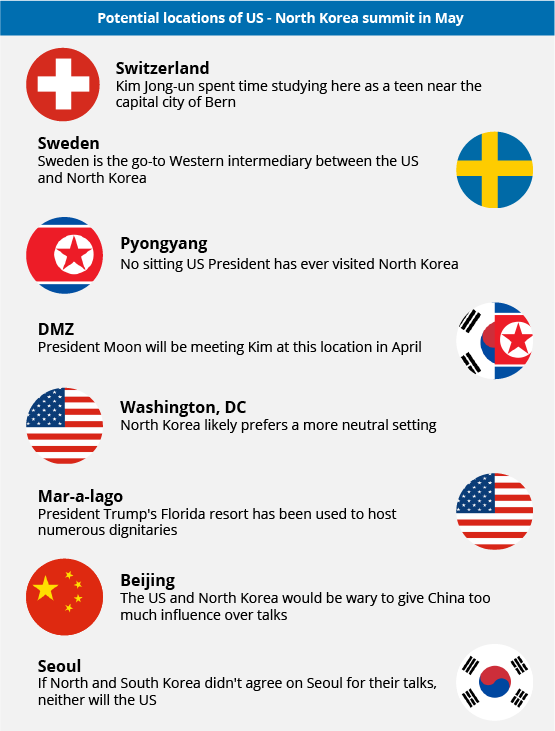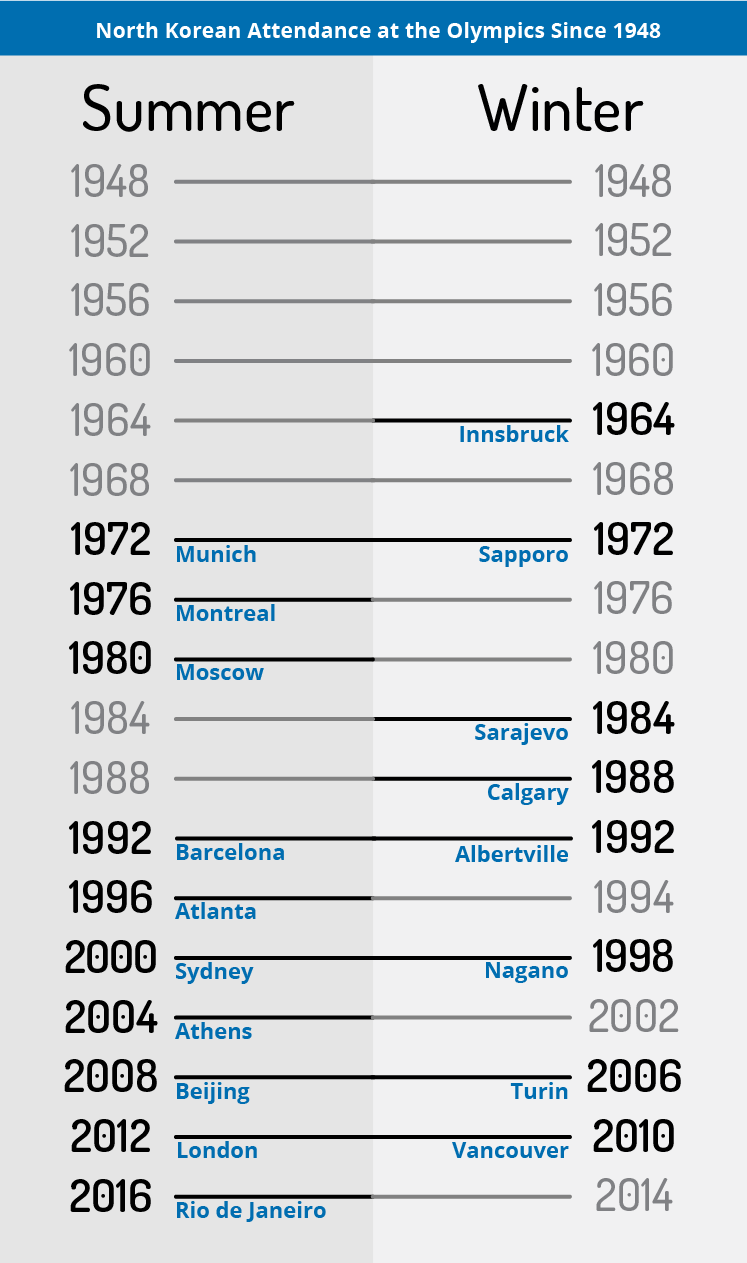Current Situation
On March 19, the US Department of Defense confirmed that the annual Foal Eagle and Key Resolve joint military exercises with South Korea will begin on April 1 and last approximately one month. A spokesperson said that the exercises will be on a scale similar to previous exercises, and involve 23,700 US and 300,000 South Korean troops. There have been no announcements regarding the involvement of US aircraft carriers. Last year’s exercises lasted two months and involved the nuclear supercarrier USS Carl Vinson. According to recent reports, South Korea is considering procuring Apache heavy-attack helicopters and anti-artillery surface-to-surface missiles, to be used in the event of a ground war.
The US and South Korean presidents are preparing for individual summits with North Korean Supreme Leader Kim Jong-un. South Korean President Moon Jae-in is planning to meet with Kim in late April, and US President Donald Trump has tentatively agreed to meet with Kim in May, although no details of the latter meeting have been confirmed, including the location. A South Korean envoy reported that Kim said he understands that joint exercises must continue, but that he expected them to be readjusted in the future if bilateral developments remain positive.
Background
Kim delivered a speech on New Year’s Day suggesting a restart in bilateral negotiations with South Korea and offered to send a delegation to the 2018 Olympics in Pyeongchang. South Korea accepted, and the two sides held a series of meetings leading up to and following the Olympics, resulting in the North Korean offer of bilateral talks with both South Korea and the US.
No sitting US president has ever agreed to meet with North Korean leadership; President Bill Clinton and President Jimmy Carter traveled to Pyongyang after leaving office.
North Korea has not held a nuclear weapon or missile test since November 28, 2017.
Assessments
US, North Korea appear committed to talks, although deep distrust remains
The announcement of a U.S.-North Korea summit marks the first ever for a sitting US President, and is made more notable by Pyongyang’s stated willingness to discuss denuclearization. The main reason to doubt a North Korean commitment to denuclearization is the fact that it views its nuclear arsenal as the ultimate guarantee of regime survival. Other, more realistic objectives for the summit might be reaching an agreement on an indefinite ban of missile or nuclear testing in exchange for limits on US-South Korea exercises or a sanctions relief.
In the immediate term, a positive outcome is the North’s offer to temporarily suspend missile tests ahead of the talks, without presenting pre-conditions such as freezing military exercises or requesting sanctions relief. This suggests Kim’s willingness to begin negotiating in good faith, although similar strong starts have collapsed in the past.
The upcoming US-led exercises look to be an in-kind response to this good faith despite public claims to the contrary that the 2018 military exercises are on a similar scale to previous years. The decision to exclude aircraft carriers and halve the length of the drills demonstrates reciprocal flexibility following statements from Pyongyang showing increased tolerance for the exercises. Pyongyang’s stated tolerance and the drawdown of exercises by the US are signals that the desire for talks is, for the time being, sincere.
Despite this projected sincerity, the exercises are perceived as highly provocative by Pyongyang. By not delaying them entirely until talks, the US may be testing Pyongyang’s restraint, as the spring exercise season is normally notorious for North Korean weapons tests. The tenuous nature of the potential US-North Korean harmony is underscored by South Korea’s military tenders for equipment that has little use outside of war with the North.
Major areas of discussion include disarmament, sanctions, detentions
There is significant divergence in the expectations of such a process, as the US views denuclearization as the dismantling of North Korea’s nuclear weapons program, while North Korea views denuclearization as the complete withdrawal of US forces from the region. At present, neither side has shown willingness to satisfy the other’s demands on the issue. The US appears equally unwilling to ease sanctions in the short term, as the current belief in Washington is that economic pressure is one of the few things that brought North Korea to negotiations in the first place. Other areas may prove more easy to reconcile, including the transfer of foreign detainees out of North Korea prisons. The prisoners serve little strategic value for North Korea, and their release would constitute a strong showing of good faith ahead of more contentious issues.
The unprecedented meeting could have positive outcomes even if the primary goal of complete denuclearization of the peninsula is not achieved, including a more general de-escalation of tensions between Washington and Pyongyang. A more comprehensive solution is less likely, as it would be particularly difficult for an agreement to be reached based on a few days of talks, especially given the short preparation time for the Kim-Trump summit. It also remains possible that the lack of preparation, along with the remaining uncertainty over a neutral location for the meeting, might lead to abandoning or delaying the summit. Ultimately, whether or not agreements are made, just holding the summit at all would mark a significant breakthrough.
Recommendations
Travel to Seoul may continue at this time, while adhering to standard security protocols regarding protests, crime and the lingering risk of conflict with North Korea.
We advise against nonessential travel to Pyongyang and North Korea given the risk of detainment of foreign travelers.
During periods of armed escalation between North and South Korea, we advise against all nonessential travel to the vicinity of the Demilitarized Zone (DMZ) and the Yeonpyeongdo Islands.

